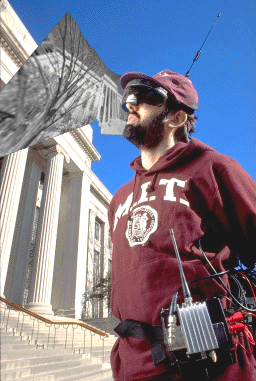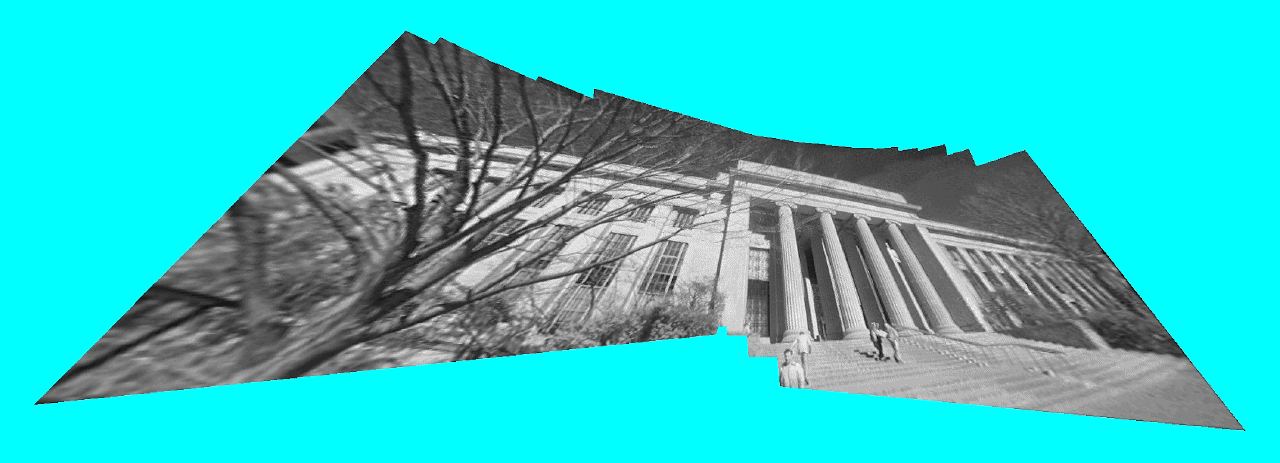 Imaging using video display and camera allows the visual experience
to be `mediated', that is, images are transmitted to a remote
processor, altered, and then sent back to my display.
Imaging using video display and camera allows the visual experience
to be `mediated', that is, images are transmitted to a remote
processor, altered, and then sent back to my display.
 You can obtain a very large version that I made with
a better camera (color). It is 4320 pixels across and 1505 high,
suitable for printing on a DesignJet 650C printer.
In this example, I stood at a fixed location and swung my head
(fitted with my wearable wireless webcam)
around to capture a sequence of images.
The imaging situation violates the assumptions (static scene
and fixed COP) in the following ways:
You can obtain a very large version that I made with
a better camera (color). It is 4320 pixels across and 1505 high,
suitable for printing on a DesignJet 650C printer.
In this example, I stood at a fixed location and swung my head
(fitted with my wearable wireless webcam)
around to capture a sequence of images.
The imaging situation violates the assumptions (static scene
and fixed COP) in the following ways:
Despite these violations of the assumptions, the result is still quite acceptable.
In the above example, the spatial extent of the image is increased by sweeping the camera left to right (this was a wearable camera, and the left-right motion was due to the rotation of my neck). Original image data available on request (please specify color or greyscale image sequence). Perhaps you might provide some feedback (email steve@media.mit.edu) on how you'd like to see the data distributed (e.g. as a UNIX tarfile, or perhaps simply as a sequence of separate image files).
 Imaging using video display and camera allows the visual experience
to be `mediated', that is, images are transmitted to a remote
processor, altered, and then sent back to my display.
Imaging using video display and camera allows the visual experience
to be `mediated', that is, images are transmitted to a remote
processor, altered, and then sent back to my display.